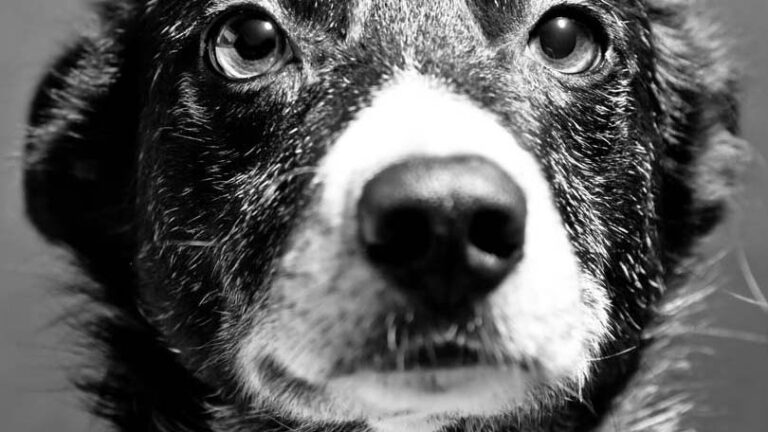Barking – Training a Dog When It’s Allowed to Bark
Every day at seven o’clock in the morning in a quiet part of the city, a car drives along with a big, hairy, white dog hanging out the rolled-down window barking his head in a deep, throaty, excited bark. They are on their way to the dog park presumably and you can set your clock to that car making its noisy appearance each and every morning.
How can the person stand to be in the car with that racket going on? And how can they concentrate on driving? Do they not realize or care that they are waking up half the city with their barking dog? How did this behavior develop and why did they not put a stop to barking when the dog was a pup?
Why do Dogs Bark?
Dogs bark for many reasons. They bark to communicate whether it’s excitement (like the dog in the car above), happiness, fear, warning, anger, boredom, or, like some humans, just to hear the sound of their own voice. They might bark as part of their ‘job’; a hound baying on the trail, a Sheltie barking to move a herd of sheep, or a German Shepherd barking at the bad guy are all jobs that require barking, at least as it relates to their breed.
Breed plays an integral part in why a dog barks. For example, we all have seen the Border collie with his herd of sheep. He herds by nipping, shouldering, and yipping at the herd. He also uses what is best described as a look – the crouched down Border collie ‘eyeballing’ his herd is a famous dog pose. What they do not do is bark. Now picture a Sheltie or a Norwegian Buhund. How do they herd? By barking at the flock in a shrill, resonating, ear piercing bark that grates on your nerves after only a few seconds, they irritate the much larger animals into moving.
Hounds are another example of infamous barkers among the canine world. How else is the hunter supposed to follow the pack of hounds if not by sound? The bark or ‘bay’ of a hound is not as earsplitting as that of the Sheltie but it is designed to travel long distances so even a hunter far behind the pack is still able to follow.
These breeds bark by instinct – it is how they work and it is how they communicate. Instinctual barkers are almost impossible to train to be completely silent. But what about the German Shepherd holding the bad guy in place by only barking at him? His instinctual bark is for warning and even though the breed was originally bred as a herder, their herding style is silent, using nips and their sheer size to move the flock. Their versatility and adaptability make them invaluable as a working breed and their ability to learn the difference between appropriate barking and inappropriate barking is one of these amazing traits.
Teaching a Puppy Not to Bark for a Lifetime of Quiet
Puppy ‘yips’ and ‘barks’ are cute and often owners unintentionally encourage the behavior by reacting to the noisy but adorable little ball of fur. A puppy barking out of boredom gets picked up, a puppy barking at a toy is played with and a puppy barking to go outside is let out immediately. Positive reaction or not, puppies soon learn that barking gets a response and the more they do it, the more responses they get. Soon you have a pup that has you wrapped around their finger and all he has to do is ‘yip’. ‘Yips’, however, turn into barks as the puppy grows.
Obviously, you have to react to a barking puppy but how you react is the important next step. The trick is to make him be quiet before you do what he wants you to do. Take the example of the puppy barking at a toy. Normal reaction is to toss the toy for the pup, play tuggies or some play action, giving the barking pup the instant reward of getting him the attention he desires. Instead, pick the toy up, ask him to sit, and wait for him to be quiet before giving him the toy or playing with him in any way. Tell him ‘no bark’ or make ‘eh eh eh’ noises and try scowling as puppies often read body and facial language better then understanding spoken commands . As soon as he is quiet, reward him with the toy or the play session. He will quickly learn that the only way he will get what he wants is to be quiet and calm.
The most common complaint about barking puppies is during house and crate training . Pups fuss to be let out but are they fussing because they need to go the bathroom or just because they are bored? An important part of house training is taking the pup outside when it asks but how do you know that is what it needs? Play it safe – if the pup has been asleep for a while and fusses and/or barks to be let out, make him sit, open the door, pick him up and immediately take him outside. Congratulate him when goes the bathroom, then pick him up, take him back inside and put him back in his crate. You know he is now empty so ignore any further complaints. He might fuss for a few minutes but will quiet down eventually and go back to sleep.
How to Train a Dog not to Bark
What if it is too late and you have a barking dog on your hands? Or, in the case of an instinctual barker such as a Sheltie or a hound, you want to learn how to control their barking before it becomes a nuisance? Here are a few common training methods that can make a nuisance barker easier to live with.
- Teach the dog to bark on command. By teaching him the word and that a few barks are all that is necessary, you now have a way of starting and stopping the barking as needed.
- Teach your dog the ‘leave it!’ command. ‘Leave it!’ is a useful command for many situations – stopping a dog from chewing on the table legs, from stopping a dog from eating something bad for them, stopping a dog from chasing the neighbor’s cat, etc. It is an effective way to stop a dog from doing anything you do not want him to do, including barking.
- Many dogs use barking as a warning – someone is walking past the house, letting you know the doorbell rang or that there is a deer in the backyard. Normally we yell at our dog and tell them to be quiet. In a dog’s mind, this instills greater excitement – ‘Oh, Mom is really upset so whoever it is walking past the house must really need to be warned off!’. Instead, say ‘thank you, good girl, leave it!’ in a happy, relaxed tone. Sensing your comfort with the situation, your dog will stop barking because everything must be okay.
- Teach your dog ‘inside voice’ and ‘outside voice’ or ‘whisper’. For dogs that bark because of their breed or instinct, allowing them to use their voice but at a low level will make the training go faster and within manageable decibel level.
Training some dogs not to bark is difficult if not impossible but training a dog that barking is okay under certain circumstances and at appropriate volume can make the entire process a positive one for both you and your dog.
Bark Collars and other Aversion Training Methods
What about dogs that only bark when no one is home? Or a dog that no matter how much you work with it, still insists on barking? There are bark collars that when the dog barks, they detect the vibration in the throat and spray a mist of citronella oil. Because the bark is on the inhalation, they get a mouth full of awful tasting oil. This harmless substance is one flavor that a dog will never get used to and they quickly learn not to bark while the collar is on. This works well for dogs that only bark when no one is home and the neighbors are beginning to complain.
If you are home and able to work with your problem barker, a spray bottle or water pistol will work with many dogs. A quick spray to the face and it distracts the dog from barking without any excitement on your part. Once he has stopped barking, call him over to you, have him sit, give him a treat and tell him he is a good boy for being quiet. This is not a foolproof method but over time, you will find your dog barks a couple of short quick barks and then comes to you automatically for the treat and some loving.
There is no reason why with a bit of patience and some training you cannot teach your dog what is allowable or appropriate barking and what is not appropriate under any circumstances.

Having discovered a fondness for insects while pursuing her degree in Biology, Randi Jones was quite bugged to know that people usually dismissed these little creatures as “creepy-crawlies”.







